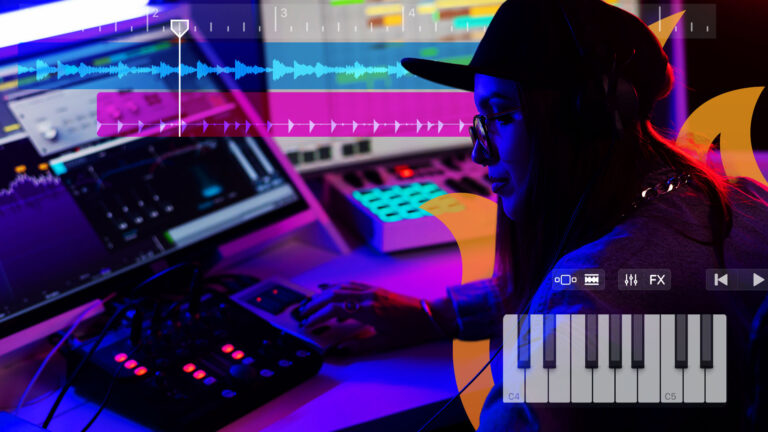
Interested in writing computer games for a living? Part of the game is about interaction and there are some common failure points. Failure points are potentially great types of interactions gone wrong. For instance, if the primary mode of interaction is via headphones, a failure point is poorly mixed audio. If the primary mode of interaction is pushing a button to shoot a gun, some failure points might be any number of responsiveness, bullet speed, or accuracy issues.
Game Interaction: Touch
Common touch components include pressing a button to shoot a weapon, open a door, or make a character jump or run. As stated above, common failure points for touch include responsiveness, bullet speed, and accuracy. For jumping, it also includes the physics of the jump.
FortNite’s shooting, for instance, can be a lesson in accuracy. In this game, the shooting is furiously fast, but the game developers have built something into the aim accuracy called bloom. Bloom, in FortNite, is one of the most maddening aspects of shooting because a player can fire a weapon, and the bullets sometimes seem to go everywhere except where that player intends. Although bloom is an intended effect designed to provide better guns with better accuracy, its execution is a work in progress. Even today, many players find it maddening.
In terms of administrative interactions, such as saving or loading a game, consider how these can be automated or made as unobtrusive as possible. For instance, adventure games often involve progress being auto saved when the player reaches a level or milestone. This is better than having to interrupt the game by pulling down a menu and saving one’s progress.
Game Interaction: Audio
Inaudible or poorly mixed sound can be disastrous. Additionally, narrated voices must fit the characters and the story. Mismatched voices can make a game ludicrous. Finally, lip syncing in some games, a failure point that involves both audio and sight, can kill immersion.
Game Interaction: Sight
In terms of sight failure points, it is always difficult to determine what style of graphics will be popular. As such, matching the graphics to one’s central story is a better strategy than guessing what the public will like. Other common failure points include unprofessional or poorly composed graphics. A game developer should develop a photographer’s eye, so to speak, by learning about composition rules.
Other failure points include character development. For any video game, characters must be perfectly conceived and rendered. Demons, for instance, should be menacing. Players should be able to visually connect with the heroes, props and the game world.
In terms of VR experiences, visual scale is a common problem. For instance, imprecise camera placement can result in the player feeling as if they are 10 feet tall. The trick to solving this is to use precisely rendered HDRI graphics, properly sized 3D models and props, and testing cameras first placed atop space holders of various so-called average heights.
Game Interaction: Speech
If speech is conveyed as text, speech is actually visual. As such, the input must be considered. Typing, for instance, on a smart phone can be tough. Display speed must also be considered. Additionally, the time the text remains on the screen must allow players time to read.
If speech is conveyed via audio, it must sound appropriate. Using text-to-speech (TTS) plugins for a game might be cheaper than paying for narration or sound bites from actors, but it can sound mechanical.
Finally, achieving realistic speech is subtle. For instance, AI or database-driven language packs filled with prescribed exposition can be repetitive. This is especially true of chatbots built on AIML. However, plugins on the Unreal and Unity markets have rudimentary AI conversation plugins that offer a certain degree of flexibility. For people with technical skills, IBM outsources its own Watson for use in AR and VR games.
Game Interaction: Emotion
Motion sickness is one of the primary drawbacks for interacting within a VR world. The primary workaround is either very slow motion or teleportation. For instance, once a player teleports from one place to another, they can then explore and interact with the environment and 3D objects by looking, touching, or listening.
Ratio of Interaction Types
In general, ratios avoid silence, otherwise known as dead air. The general rule of gaming is that the player should always be doing something or have the option to do something. In times of battle lull, for instance, interaction might switch from touch (pushing buttons that swing swords) to audio as the player listens to other characters tell their back stories. Additionally, during moments of lull, the sense of boredom can be offset by an increased focus on spectacular visuals.
Depending on the game, the ratio of lull to action should be kept at approximately 70:30 or 95:5. For instance, puzzle games can end up feeling very empty, action-wise, because the game requires the player to complete a puzzle. Action games often strike an 80:20 ratio of action to backstory, but sometimes, during particularly tough levels, the interaction becomes all button pushing as players struggle to swing swords or shoot fast enough.
Assessing whether the degree of interaction is engaging is as much a matter of art as it is science and is best assessed by at least one experienced game developer with a broad knowledge of games across all genres. This game developer can then compare action levels across a lot of games and provide feedback as to where one game or another fits. Whatever ratio one selects, the rule “the player should always be doing something” will serve play experience well.
Did learning about the common failures of each type of game interaction interest you? Today, the creative and financial success of major game releases increasingly depends on the strength of the game’s world, characters and story. University of Silicon Valley’s new Bachelor’s in Game Design Art Game Writing degree concentration—one of only a few such programs in the world—was developed to empower and support aspiring writers and narrative designers who want to be a part of this bold new storytelling frontier.
University of Silicon Valley is uniquely poised to offer a meaningful and valuable education for 21st century students. We believe in an education that directly correlates with the work you’ll be doing after you graduate. Interested in learning more? Contact Us today.
Game Interaction: Emotion
Motion sickness is one of the primary drawbacks for interacting within a VR world. The primary workaround is either very slow motion or teleportation. For instance, once a player teleports from one place to another, they can then explore and interact with the environment and 3D objects by looking, touching, or listening.


